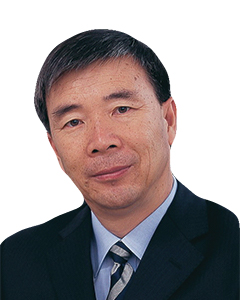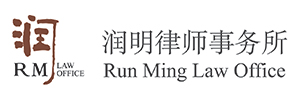In 2009 the Supreme People’s Court released two sets of judicial interpretations in succession, the Notice of the Supreme People’s Court on Several Issues Concerning Jurisdiction in Civil Disputes Involving the Recognition of Well-Known Trademarks and the Interpretations of the Supreme People’s Court of Several Issues Concerning the Application of the Law in the Trial of Civil Disputes Involving the Protection of Well-Known Trademarks, which took effect on 1 May 2009.
Several issues concerning the recognition of well-known trademarks in the course of civil actions as addressed in the Notice and Interpretations differ somewhat from the way they were addressed in previous judicial interpretations and should be given particular attention by the holders of well-known trademarks.

Executive partner
Run Ming Law Office
Jurisdiction
The Interpretations, issued by the Supreme People’s Court on 5 January 2009, expressly require that Intermediate People’s Courts of
(1) municipalities in which the seat of provincial and autonomous region people’s governments are located,
(2) municipalities with independent development plans and
(3) municipalities directly under the central government exercise jurisdiction in civil disputes involving the recognition of well-known trademarks, thus stripping basic level courts of such jurisdiction and setting limits on the scope of jurisdiction exercised by intermediate people’s courts in well-known trademark cases.
Recognition of well-known marks
Article 2 of the Interpretations expressly stipulates the three sets of circumstances under which a well-known trademark should be recognized. These are
(1) where, pursuant to Article 13 of the PRC Trademark Law, the defendant uses a trademark that is identical or similar to the plaintiff’s registered trademark for dissimilar goods or services, or where the defendant uses a trademark identical or similar to the plaintiff’s non-registered trademark for identical or similar goods or services, it is necessary to consider whether the plaintiff’s registered trademark or non-registered trademark should be recognized as a well-known trademark;
(2) when a later corporate name conflicts with a prior registered trademark and when determining whether the use of the later corporate name constitutes trademark infringement or unfair competition, it is necessary to consider whether the plaintiff’s registered trademark should be recognized as a well-known trademark; and
(3) where, in the course of the plea process in the original action or in the claim process of a countersuit, the defendant alleges that the plaintiff’s registered trademark is a reproduction, copy or translation of its prior non-registered well-known trademark, it is necessary to consider whether the defendant’s non-registered trademark should be recognized as a well-known trademark. After the entry into effect of the Interpretations, courts may not determine whether a trademark in a case is well-known other than in the circumstances mentioned above.

Attorney
Run Ming Law Office
Non-recognition of marks
The second paragraph of Article 3 of the Interpretations expressly provides that in a case involving a conflict between a domain name and a registered trademark where the registered trademark holder asserts its rights, there is no need to determine whether the registered trademark is a well-known trademark. Accordingly, as Article 6 of the Interpretations of the Supreme People’s Court on Several Issues Concerning the Application of the Law in the Trial of Civil Dispute Cases Involving Computer Network Domain Names implemented from 24 July 2001 conflicts with the foregoing provision, people’s courts at every level can no longer use Article 6 to determine whether the registered trademark of the party asserting rights is a well-known trademark.
Adduction of evidence
Article 1 of the Interpretations explains the concept of “well-known trademark” as “a trademark that is widely known by the relevant public in the PRC”. This concept emphasizes that “well-known” means well-known in the PRC, and that trademarks that are famous only outside the PRC may not be recognized as PRC well-known trademarks. Additionally, Article 8 of the Interpretations specifies that, “If a plaintiff, with respect to a trademark that is widely known to the public in the PRC, has provided basic evidence of its trademark being well-known, or if the defendant does not dispute such fact, the People’s Court shall recognize the fact of the trademark being well-known.” This lightens the plaintiff’s burden of proof in respect of trademarks that are widely known to the public.
Consequences of damage
Article 9 of the Interpretations introduces the theory of trademark dilution for the first time. The term “dilution” covers the following three aspects:
(1) reduction of the distinctiveness of a well-known trademark;
(2) tarnishing of the market reputation of a well-known trademark; and
(3) illegitimate use of the market reputation of a well-known trademark. The Article specifies that anything that causes a reduction in the distinctiveness of a well-known trademark or tarnishes its market reputation will be deemed to “confuse the public and possibly prejudice the interests of the registrant of the well-known trademark” as specified in the second paragraph of Article 13 of the PRC Trademark Law. Prior to this, the interpretation of “confusion and mistaken identification” in the PRC Trademark Law and judicial interpretations was limited to the confusion and mistaken identification of the source of the goods or services and confusion and mistaken identification by association.
Demanding an end to infringement
Article 11 of the Interpretations stipulates that if the registered trademark used by a defendant constitutes infringement of the rights in a well-known trademark, the people’s court may render a judgment prohibiting the defendant from using said trademark. This provision differs from the provision that people’s courts may not accept conflicts between two registered trademarks and that rights holders are required to resolve the same through an administrative procedure under the Regulations of the Supreme People’s Court on Several Issues Concerning the Trial of Civil Dispute Cases Involving Conflicts Between Trademarks or Enterprise Names and Prior Rights. Similarly, by granting a well-known trademark holder the right directly to institute legal action in a people’s court to demand that the defendant cease using an infringing trademark, it accords protection to well-known trademarks that is greater than that accorded to ordinary trademarks.
Wang Yadong is the executive partner of Run Ming Law Office. Lu Lei is an associate at Run Ming Law Office.
Suite 1806, NCI Tower,
12A Jianguomenwai Avenue, Chaoyang District
Beijing, China
Postal code: 100022
Tel: +86 10 65693511
Fax: +86 10 65693512/13
Email:
wangyd@runminglaw.com
lul@runminglaw.com






















